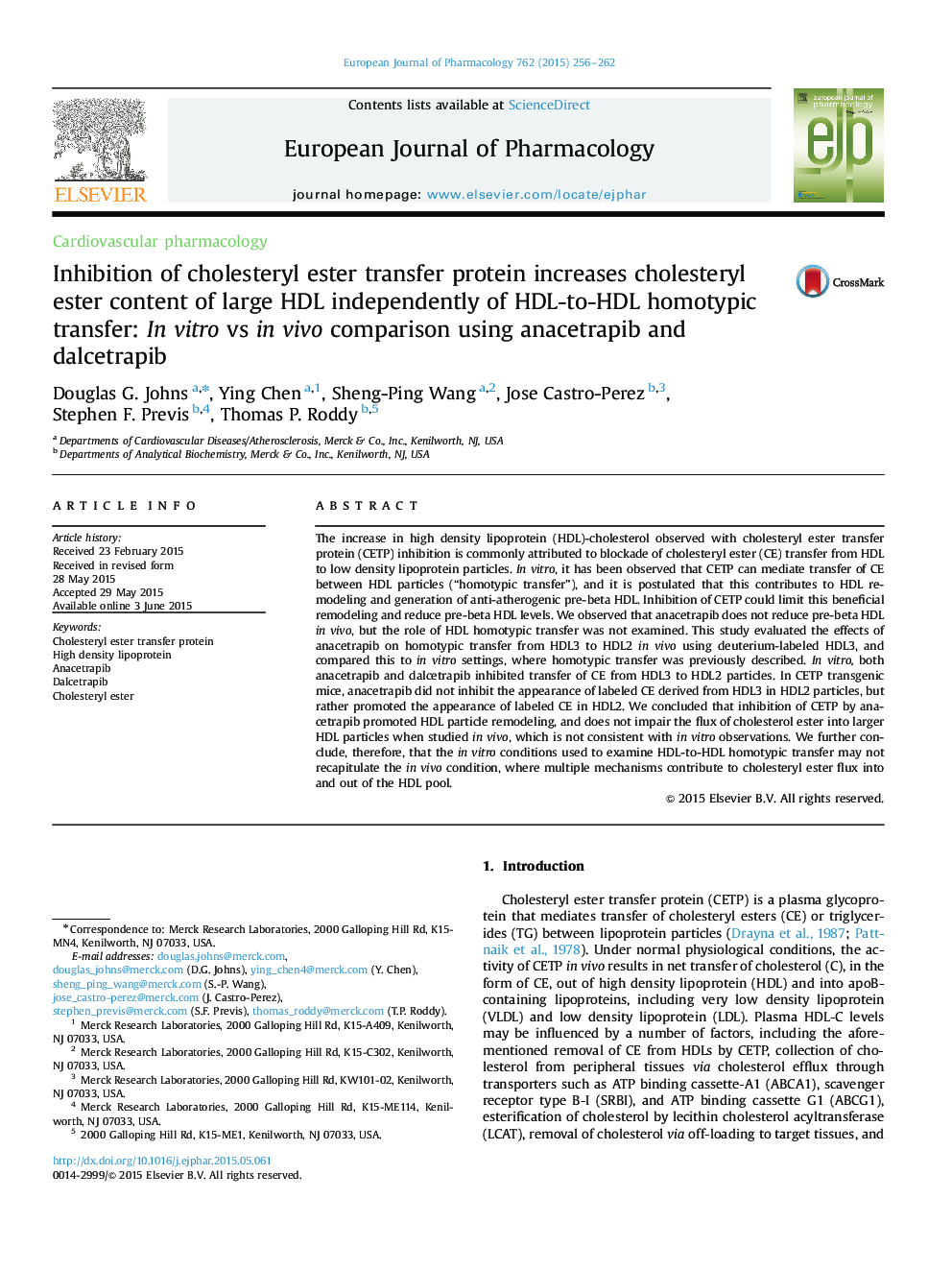| کد مقاله | کد نشریه | سال انتشار | مقاله انگلیسی | نسخه تمام متن |
|---|---|---|---|---|
| 5827219 | 1558919 | 2015 | 7 صفحه PDF | دانلود رایگان |

The increase in high density lipoprotein (HDL)-cholesterol observed with cholesteryl ester transfer protein (CETP) inhibition is commonly attributed to blockade of cholesteryl ester (CE) transfer from HDL to low density lipoprotein particles. In vitro, it has been observed that CETP can mediate transfer of CE between HDL particles (“homotypic transfer”), and it is postulated that this contributes to HDL remodeling and generation of anti-atherogenic pre-beta HDL. Inhibition of CETP could limit this beneficial remodeling and reduce pre-beta HDL levels. We observed that anacetrapib does not reduce pre-beta HDL in vivo, but the role of HDL homotypic transfer was not examined. This study evaluated the effects of anacetrapib on homotypic transfer from HDL3 to HDL2 in vivo using deuterium-labeled HDL3, and compared this to in vitro settings, where homotypic transfer was previously described. In vitro, both anacetrapib and dalcetrapib inhibited transfer of CE from HDL3 to HDL2 particles. In CETP transgenic mice, anacetrapib did not inhibit the appearance of labeled CE derived from HDL3 in HDL2 particles, but rather promoted the appearance of labeled CE in HDL2. We concluded that inhibition of CETP by anacetrapib promoted HDL particle remodeling, and does not impair the flux of cholesterol ester into larger HDL particles when studied in vivo, which is not consistent with in vitro observations. We further conclude, therefore, that the in vitro conditions used to examine HDL-to-HDL homotypic transfer may not recapitulate the in vivo condition, where multiple mechanisms contribute to cholesteryl ester flux into and out of the HDL pool.
Journal: European Journal of Pharmacology - Volume 762, 5 September 2015, Pages 256-262